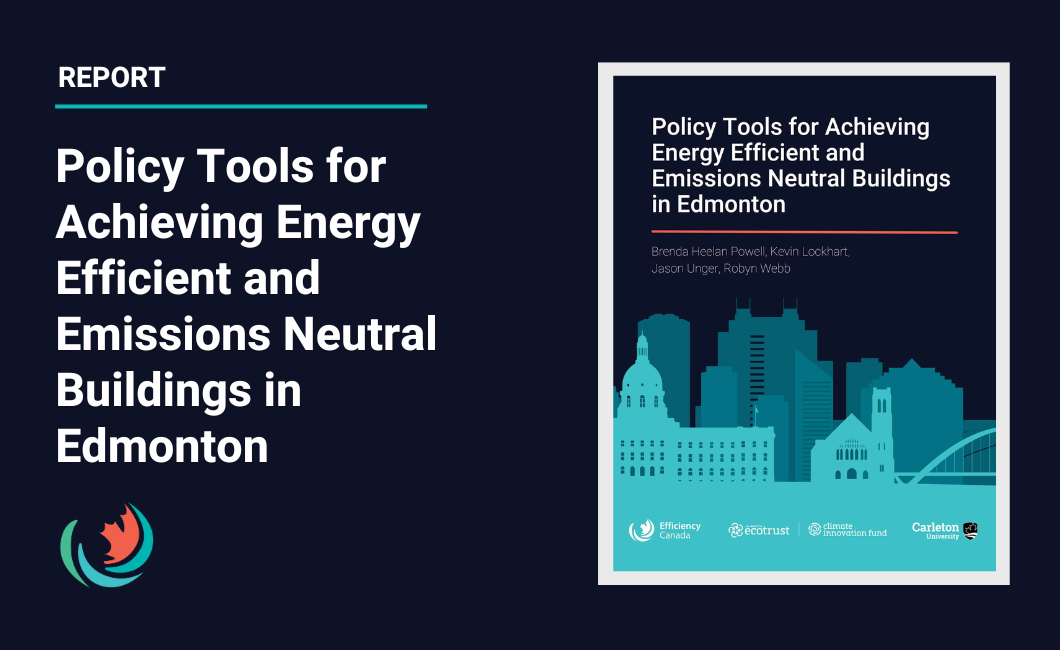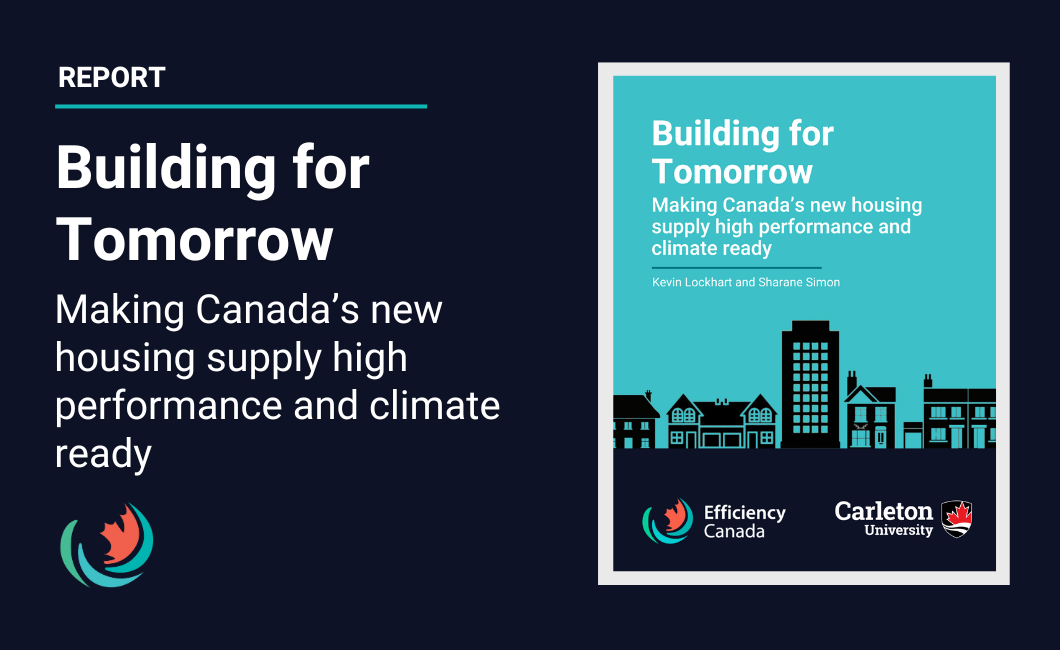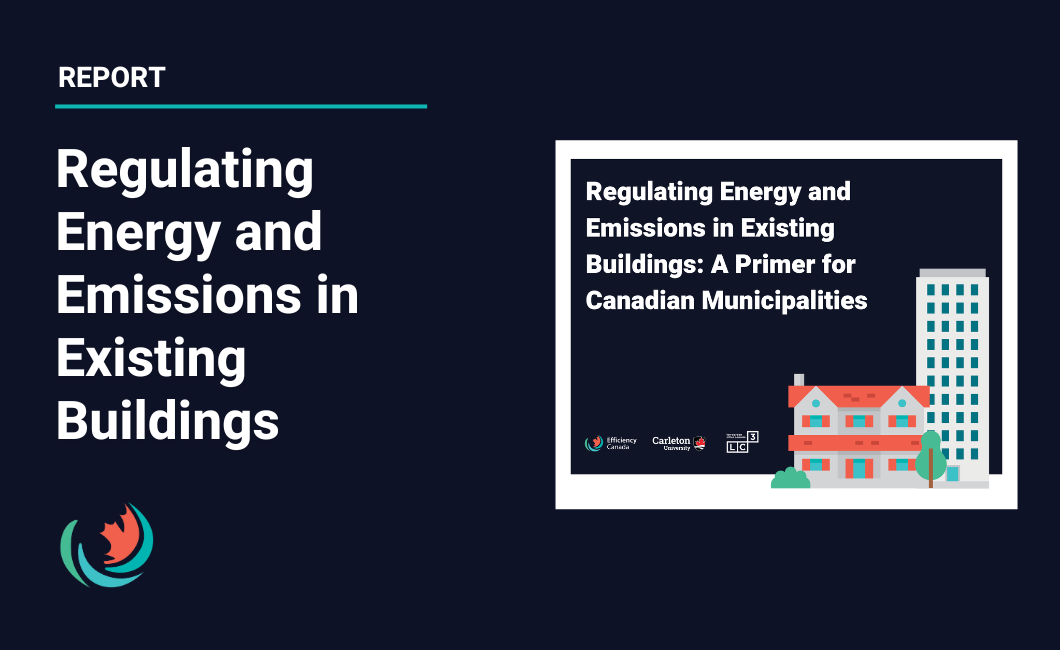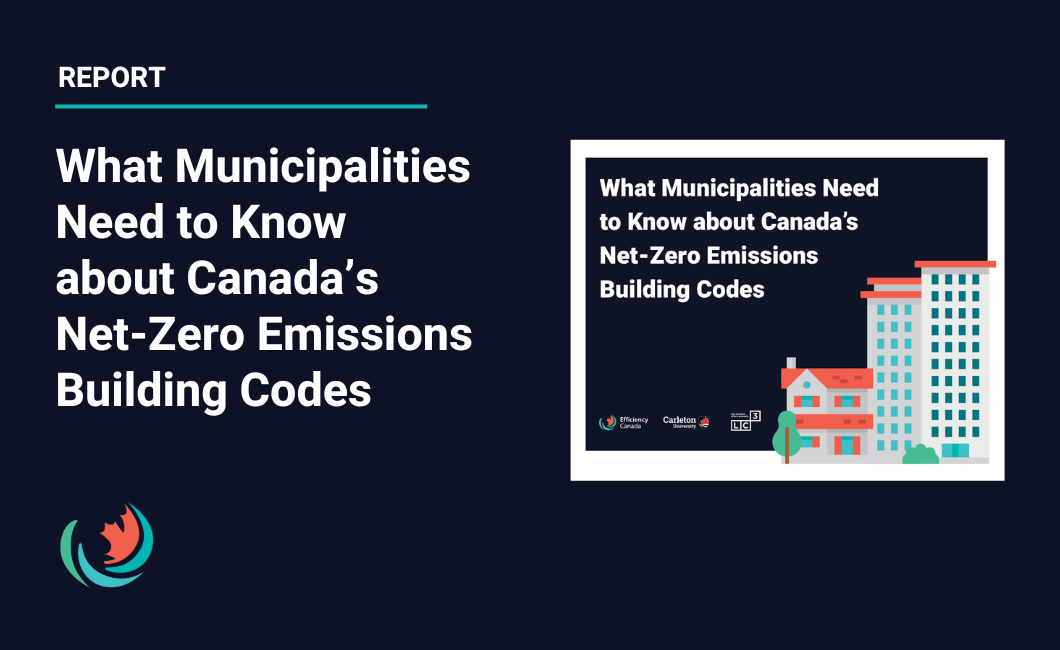
This report offers policy recommendations for federal, provincial, and local governments aimed at fostering meaningful and sustainable advancements in new housing construction. Authored by Kevin Lockhart and Brendan Haley.

In this report, we consider the federal government’s role in advancing commercial building decarbonization at scale, using Mandatory Building Performance Standards. Authored by Sharane Simon.

This report examines how policy can accelerate newly constructed emissions-neutral buildings in Edmonton. Authored by Brenda Heelan Powell, Kevin Lockhart, Jason Unger, and Robyn Webb.

Efficiency Canada’s new research highlights a unique opportunity to tackle the twin challenges of housing and climate while increasing household affordability.

This new guide offers municipalities and policymakers insights into the role existing buildings are expected to play in meeting Canada’s decarbonization goals. Authored by Kevin Lockhart and Sharane Simon.

This report shows how to use the upcoming net-zero emissions codes as a lever to accelerate climate action. Authored by Kevin Lockhart.







